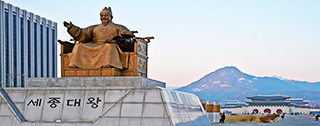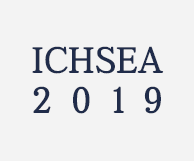Visitors will discover its rich natural beauty combined with a unique cultural and historical heritage. After a rapid modernization in recent decades, Koreans still maintain their traditional values such as hospitality and the time- honored Confucian respect for the elderly.

Traveling in Korea is enjoyable all year round thanks to its distinct four seasons and the beautiful changes of nature. In spring (March to May), mountains and fields are in bloom with cherry blossoms, forsythias, azaleas, magnolias and lilacs. In summer (June to early September), luxuriant forests, bright green fields and the cobalt blue sea draw people outdoors. In autumn (September to November), cool temperatures and a clear sky make it the most pleasant time of the year in Korea. The mountains all over the country are covered in red and yellow blazing autumn foliage. In winter (December to February), mountain slopes become the place for skiing and snow festivals. Winter in Korea is another delightful season of great amusement.

More than 400 local festivals throughout the year represent colorful facets of the Korean culture. Events that have great appeal to tourists include the Icheon-Gwangju-Yeoju Ceramic Exposition and the sea-splitting Jindo Yeongdeungje Festival. Korea takes pridein many world-renowned cultural assets which UNESCO has designated on its World Cultural Heritage List. They are Changdeokgung royal palace, Hwaseong fortress, Seokguram stone buddha grotto, Bulguksa temple, the Tripitaka Koreana wood block printing plates at Haeinsa temple, Jongmyo shrine in Seoul, the Gochang, Hwasun and Ganghwa dolmen sites, and the Gyeongju remains of Silla Dynasty.
Click >
Food

Korean food contains less meat than most traditional Western or Chinese cuisine, and features a wide variety of fermented foods, assorted vegetable dishes, and rice. It is very nutritious and is becoming more and more popular around the world for its health benefits. Traditionally, Korean table settings are comprised of a number of side dishes. Family and friends gather around the table and share between themselves, sampling every dish. Only boiled rice and guk (soup) are two items that are not shared. These customs represent the true character of Koreans as being people who prefer to do everything together. (Major Korean Food: Kimchi, Bibimbap, Galbi, Bulgogi, Hanjeongsik)
HANGEUL
 |
Hangeul was invented by King Sejong in 1446 with assistance from some scholars to give the people an alphabet that was easy to read and write. Throughout the world, there are some 3,000 spoken languages but roughly only 100 alphabets . Among these, only hangeul was systematically invented without influence from any other language. |
an important part of the Memory of the World Heritage. As a result of the Korean Wave and Korea 's economic prosperity, desire to learn hangeul and the Korean language is exploding.
| English | Korean | Korean Pronunciation |
| How are you? | 안녕하세요? | Annyeong-haseyo? |
| Thank you. | 감사합니다. | Gamsa-hamnida. |
| Yes. | 예. | Ye. |
| No. | 아니요. | Aniyo. |
| I am sorry. | 미안합니다. | Mian-hamnida. |
| I enjoyed the meal. | 잘 먹었습니다. | Jal mwogeot-sseumnida. |
| Please give me some more of this. | 이것 더 주세요. | Igeot deo juseyo. |
| The check, please. | 계산서 주세요. | Gyesanseo juseyo. |
| Do you take credit cards? | 카드로 계산할 수 있습니까? | Kadeuro gyesan halsu isseumnikka? |
| How much is it? | 얼마입니까? | Eolma-imnikka? |
| It is ________won. | __________원 입니다. | ___________won imnida. |
| 5,000 | 오천 | O-cheon |
| 10,000 | 만 | Man |
| 15,000 | 만오천 | Man-o-cheon |
| 20,000 | 이만 | I-man |
| 30,000 | 삼만 | Sam-man |
| where is the restroom? | 화장실 어디입니까? | Hwajangsil oedi-imnikka |
| Goodbye. | 안녕히 계세요. | Annyeonghi gyeseyo. |




















